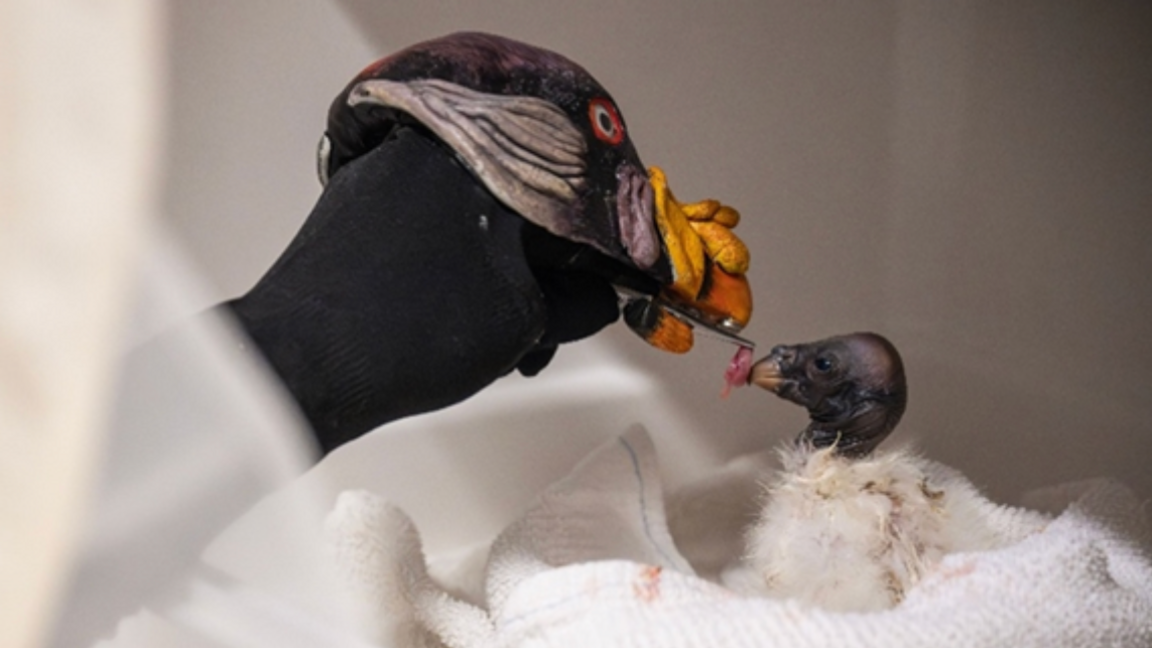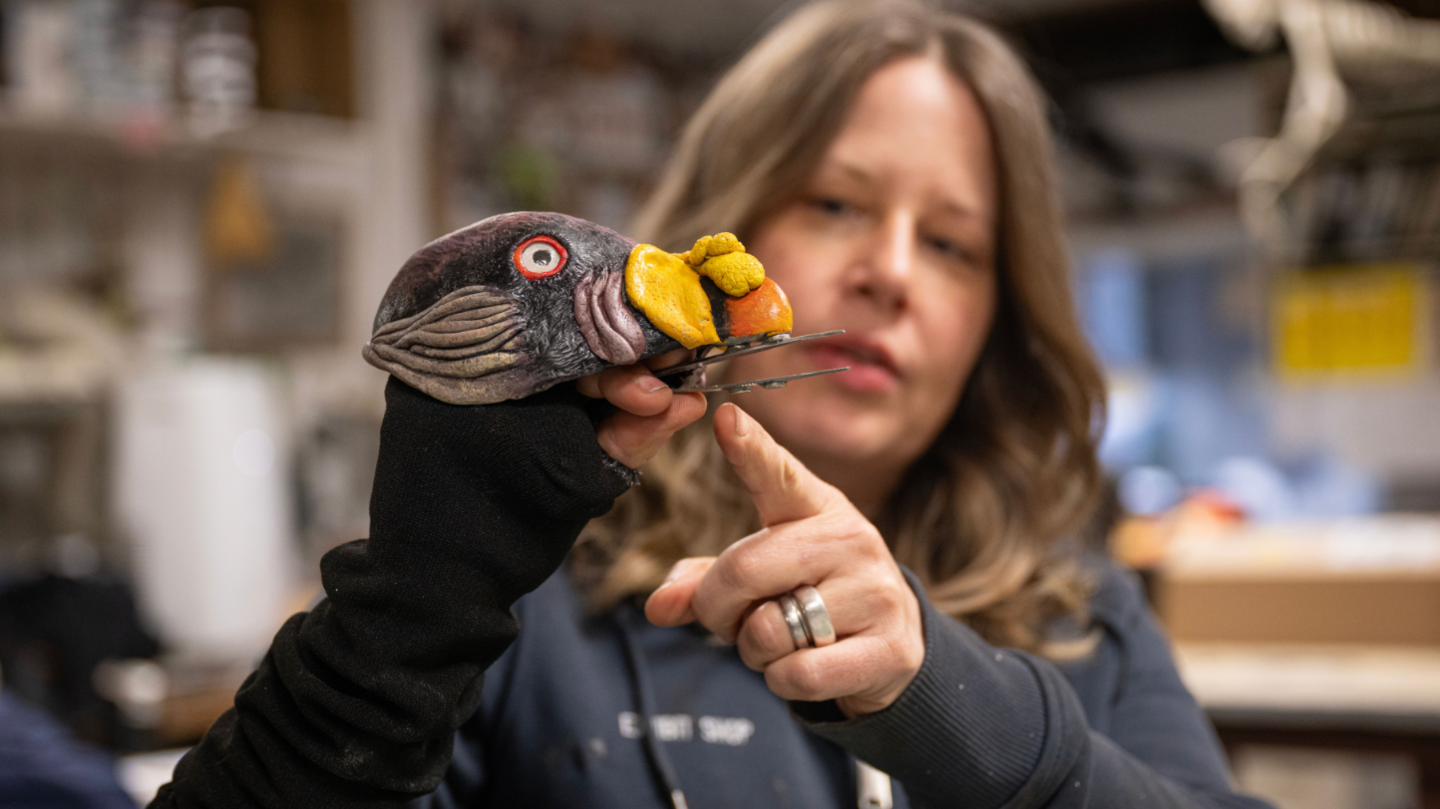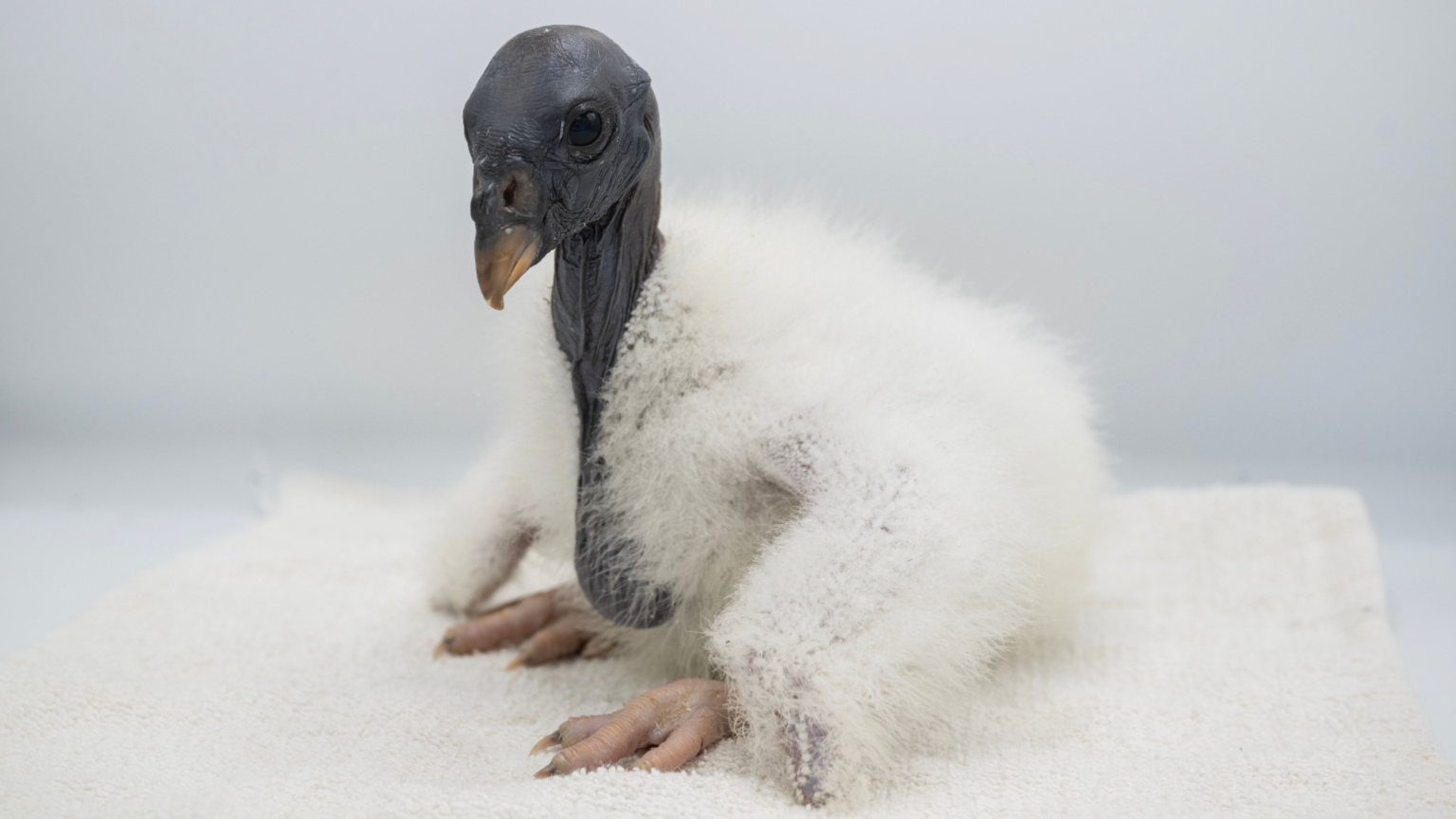Baby vulture chick fed by life-like hand puppet

- Published
When you first look at this King vulture chick it might look like any other happy baby being fed by it's mother.
But would you be surprised to hear the mother is actually a hand-puppet?
The chick hatched in February and has been living at the Bronx Zoo, in New York ever since.
Some vultures don't make the best parents and can be neglectful towards their babies after they're born.
So to make sure the chick is properly looked after, the keepers at the zoo have stepped in.
By using a puppet that looks like a adult vulture, they can make sure the chick doesn't imprint on humans and struggle around other vultures in the future.
- Published11 October 2024
- Published11 March
- Published27 September 2024
Imprinting is when an animal forms an attachment to the first thing they see after they hatch, and this can continue for life.
Conservationists like the staff working with this baby King vulture try to stop animals from imprinting on humans.
Often this is for their safety, and can make it easier to release them into the wild.
This technique of using a lifelike puppet was developed at the zoo more than 40 years ago, when staff hand-raised Andean condors using a hand puppet designed to look like an adult bird.
These chicks where later released into the wild.
The vulture hand puppet was designed and made by the Bronx Zoo's artists in its Exhibition and Graphic Arts Department.

The chick is fed from pincers where the mothers mouth would on the model
The chick is kept in an enclosure next to an adult King vulture which means it is also able to learn and understand the behaviour of their own species and form relationships.
This baby is the first King vulture hatched at the zoo since the 1990s, and its father only has one other living descendent.
Keepers don't yet know what the sex of the chick is.

King vulture chicks are born with white down feathers and will gradually start developing more grown-up feathers after four months.
But they won't start to look similar to the adult King vulture for a while, as adult plumage doesn't form until they are about four years of age.
The species come from South America and can be found from southern Mexico to northern Argentina and northern Uruguay.
They currently have a stable population in the wild, but habitat destruction and poaching are causing some reduction in their numbers.
